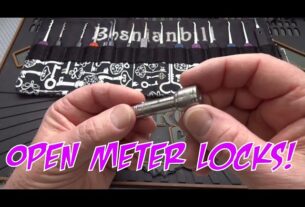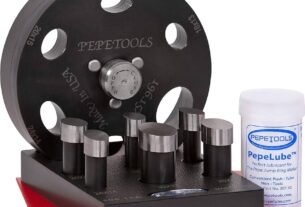Deburring tools are essential for removing sharp edges and burrs from metal, plastic, and other materials. However, if you’re new to using these tools, it can be intimidating to know where to start. In this guide, we’ll walk you through the basics of how to use a deburring tool effectively.
What is a Deburring Tool?
A deburring tool is a handheld instrument that removes rough edges and burrs from surfaces. These tools come in various shapes and sizes, but they all work by shaving off excess material from the surface of an object.
Why Use a Deburring Tool?
Deburring tools are used for several reasons. First and foremost, they make surfaces safer by removing sharp or jagged edges that could cause injury. Additionally, deburring helps improve the quality of finished products by ensuring that they meet specific standards.
How to Choose the Right Deburring Tool
Choosing the right deburring tool depends on several factors, including the type of material you’re working with and the size of the burr or imperfection you need to remove. Here are some tips for selecting the right tool:
1. Consider the Material – Different materials require different types of deburring tools. For example, softer materials like plastics may require less aggressive tools than harder metals.
2. Evaluate the Burrs – Take note of the size and shape of any burrs or imperfections you need to remove. This information will help inform which deburring tool is best suited for your needs.
3. Determine Your Budget – Deburring tools come in a range of prices, so it’s essential to determine how much you’re willing to spend before making a purchase.
How to Use a Deburring Tool
Now that you understand what a deburring tool is and how to choose the right one let’s dive into how to use it properly.
Step 1: Prepare Your Workspace
Before you begin using your deburring tool, make sure your workspace is clean and organized. Remove any clutter or debris that could get in the way of your work.
Step 2: Secure Your Material
Next, secure the material you’ll be deburring in a vice grip or clamp to prevent it from moving during the deburring process.
Step 3: Choose the Right Bit
Select the appropriate bit for your deburring tool based on the material you’re working with and the type of burr you need to remove. Make sure the bit is securely attached to the tool before beginning.
Step 4: Start Deburring
Now it’s time to start deburring. Begin by holding the tool at a slight angle and applying gentle pressure to the surface of your material. Move the tool back and forth across the surface, being careful not to apply too much pressure.
Step 5: Check Your Progress
Periodically stop and check your progress. If there are still burrs or imperfections present, continue deburring until they’ve been removed entirely.
Step 6: Clean Up
Once you’ve finished deburring, use a clean cloth or brush to remove any debris or dust from your workspace and material.
Tips for Using a Deburring Tool Effectively
– Always wear gloves and eye protection when using a deburring tool.
– Use slow, steady movements when deburring to avoid damaging your material.
– Experiment with different angles and pressures to achieve the best results.
– Never force a deburring tool through material; this could cause damage to both the tool and object being worked on.
Conclusion
Using a deburring tool may seem intimidating at first, but with practice and patience, anyone can learn how to use these tools effectively. Remember always to prioritize safety by wearing protective gear and taking necessary precautions before beginning any project.
Wiki Reference:
https://en.wikipedia.org/wiki/Deburring




